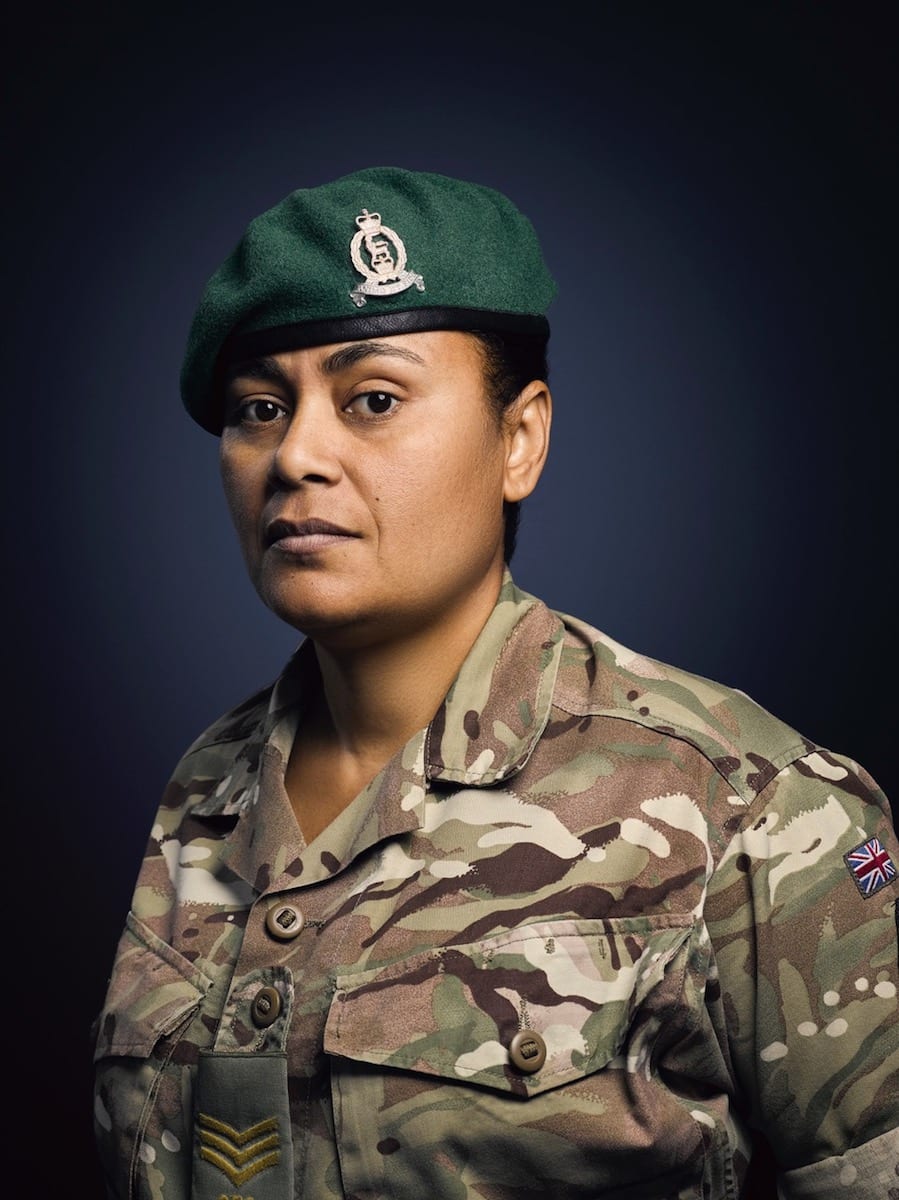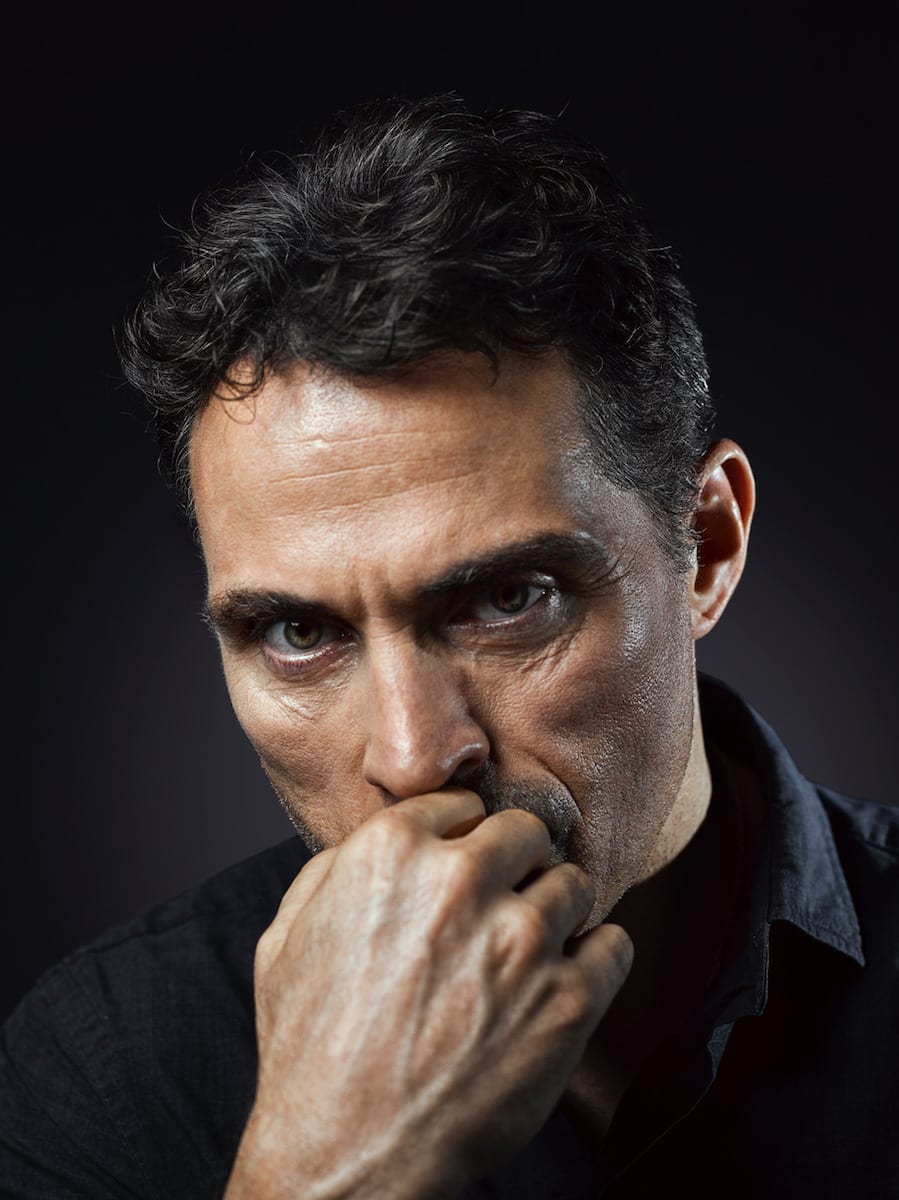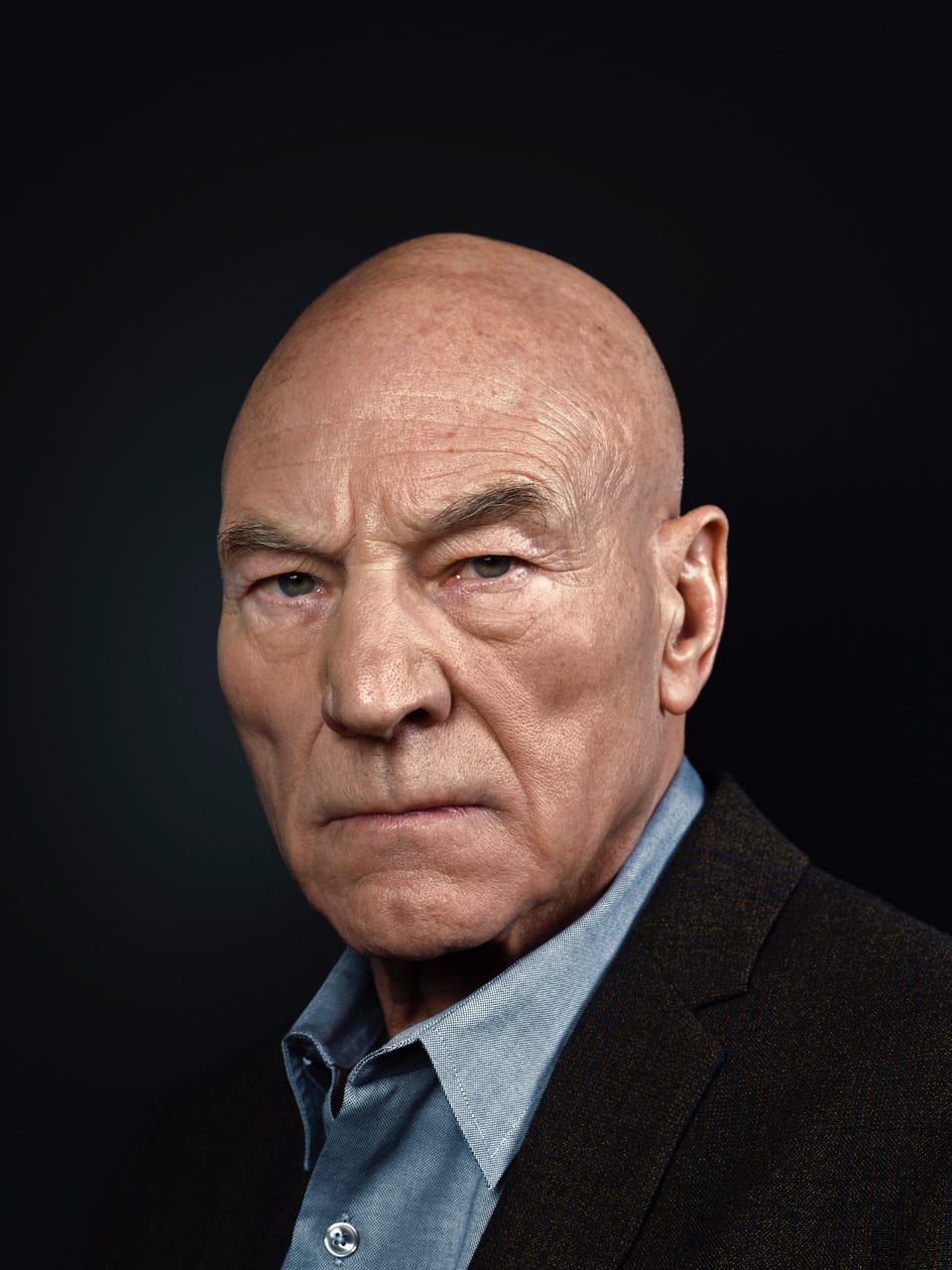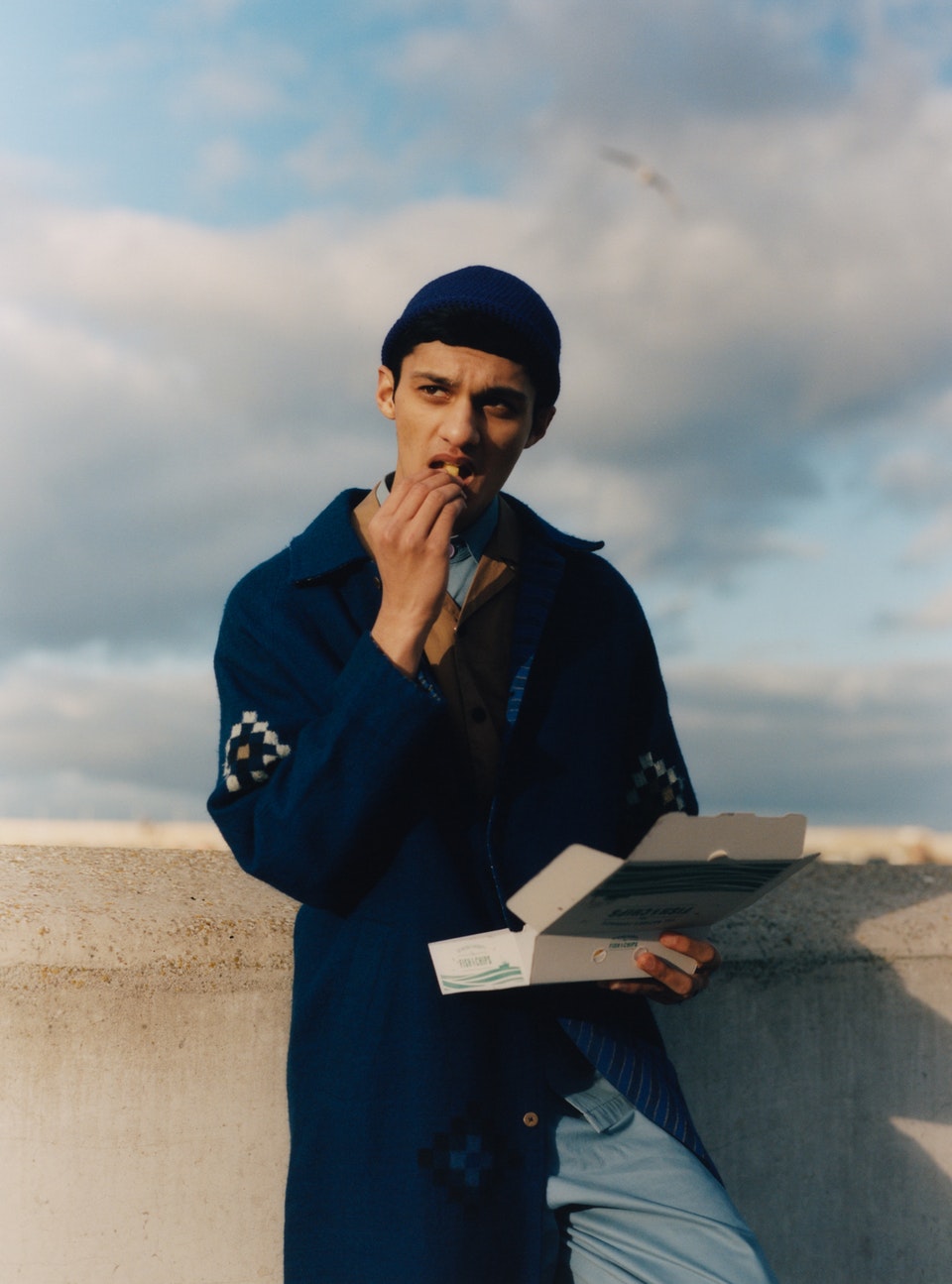Rory Lewis is an acclaimed portrait photographer who has worked with a wide range of subjects, from British army generals to famous actors such as Sir Patrick Stewart, William Shatner and Sir Ian McKellan.
After embarking on a mammoth project with the British Army in 2016, Lewis entered a photograph from the resulting series, ‘Soldiery’, into Portrait of Britain. The selected portrait of Captain Anani-Isaacs was chosen as a symbol of the modernity and diversity of the new British army. Lewis has since taken the project to new heights, and is now working with Italian army regiments to produce similarly styled photographs that draw inspiration from Napoleonic era artists.
While Lewis is still inspired by art rather than photography, his new series ‘Portraitist’ is a sharp turn from the static portraiture of ‘Soldiery’; it dramatically depicts celebrities in the style of Caravaggio. He is hoping to extend ‘Portraitist’ by using groups of actors to create scenes reminiscent of Renaissance art. Lewis believes that the key to good portraiture is being bold and taking risks with your subjects, by pushing them to release emotion.
Could you tell me about your Soldiery series, and how you came to select the photograph for Portrait of Britain?
Two years ago, The Guardian commissioned me to photograph a British army general. I felt quite excited to be photographing one of the leaders of the British Army, so I emailed several more and one of my letters fell on the desk of General Sir James Everard, who was commander of the field army. I sent him the portrait I had taken with The Guardian, and he invited me to photograph a few regiments, with the intention of capturing the diversity and tradition of the modern British army. From then on the project just grew and grew. In the end, I photographed more than 24 different regiments, battalions and corps over a two year period, which was 278 British soldiers in total.
When it came to selecting an image for Portrait of Britain, I was looking for portraits that best explained what Soldiery was all about. I wanted to show the new army of the 21st Century, and I thought Captain Anani-Isaacs stood out as the soldier who best represented that.
How have you benefited from having an image selected for Portrait of Britain 2017?
I got a great deal of recognition from Portrait of Britain. My photograph was featured quite predominantly in the press, which I was very pleased about. At the time, I was shooting my Soldiery project, so it was quite gratifying to have an image from the series publicly presented. It garnered more interest in that project and in the work that I was doing. The recognition also got me attention from several galleries. I have just had a meeting with Wex Photographic, who are going to be exhibiting a body of my new work solely because they saw my photograph in Portrait of Britain and then attended the exhibition of my work at the National Army Museum.
You get hungry because you’re suddenly being featured nationwide. Last year, Portrait of Britain went viral in the UK. Being a part of it makes you want to do more and stand out more. I entered PoB the year before in 2016 and I didn’t get through, so being featured in 2017 was a wonderful experience.

What do you think makes for a compelling portrait?
So much of the portraiture commissioned in the press and print industry is reluctant to take risks. I try to challenge that safety and introduce moments of spontaneity and awkwardness. When I am commissioned by a company, I always make sure that I have one moment at the end, which I like to call my dessert, where I’ve finished my brief and I have that person to myself. You shouldn’t waste your moments. In a lot of my sittings I only have five or ten minutes so I have to break the ice with my subject very quickly. I like to keep them in continuous movement and direction in order to capture the movement of their thoughts.
When I was shooting Sir Patrick Stewart, I realised that we are too used to seeing him play the hero, so I asked him to play the villain. We captured a series of portraits that made him into a Richard III or Machiavellian character. When I’m working with an actor, I like them to act. I’m always waiting for that moment of spontaneity in expression. I ask them to move and express themselves, and I try to work them into a frenzy. I don’t think photographers do that enough.
Have you always been confident to interact with with your subjects so boldly?
At first, it was quite a difficult prospect. When I did my first celebrity portrait years ago, I forgot how to breathe; you get nervous at the idea of meeting someone famous, but when you have a brief in front of you the pressure to do something takes over, and the stage fright goes a bit. You go into auto mode, I think, in terms of directing people and getting them to move. And then you realise that they are just ordinary people like everybody else.
Do you have any advice for future Portrait of Britain entrants, and more generally, people looking to get into portrait photography?
Entrants should think about their community and the area around them, and try to encompass what it means to be British in the 21st Century. A portraitist is nothing without a compelling subject. Look out for stories and interesting people, start a project and perhaps something wonderful will happen when you look through your lens.


Future generations will look to Portrait of Britain 2019 to see the face of the nation in a historic moment. What will it look like? Enter your work today!


